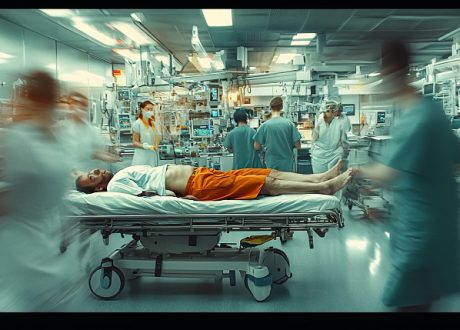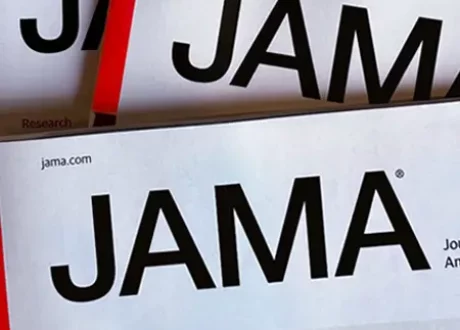Spoon Feed
In patients who are deemed “High Risk” for a subarachnoid hemorrhage (SAH), and present > 6 hours after symptom onset, a negative head CT must be accompanied by a lumbar puncture (LP) to satisfactorily rule out SAH.
Why does this matter?
SAHs are debilitating injuries that result in significant morbidity and mortality. Additionally, outcomes are greatly affected by misdiagnosis and delay of appropriate management. Given that one of the most common ED complaints is headache, it seems ED providers are facing an uphill battle when determining who is just a headache and who is THE HEADACHE!
A Pro-LP discussion was provided by two ED physicians who examined prior and posterior probabilities of SAH after negative CT in patients with low, medium, and high risk, based on elements from the history.
Come and see what’s on tap… in your patient’s spine.
This article, supporting the diagnostic importance of an LP in SAH, highlighted a prospective cohort study of 3,132 patients. This study found a sensitivity of 100% in diagnosing SAH by CT when obtained <6 hours of symptom onset but 85.7% >6 hrs. A meta-analysis that included the same study yielded a negative likelihood ratio (LR-) of 0.07 for the diagnosis of SAH by CT after 6hrs. When LP was added to the CT, sensitivity increased to 100% regardless of elapsed time. It also found some aspects of the history and exam had LR+ and LR- that were meaningful.
While the authors acknowledge that LPs are frequently subject to bloody taps (thus decreasing the specificity), they note that this increase in sensitivity, combined with increased diagnostic information (diagnosing meningitis, etc.) offsets the drawbacks in HIGH-risk patients.
To illustrate this, the authors apply this to three patient cases: low, medium, and high risk. Pre-CT prior probabilities of SAH were derived from a Bayesian analysis of certain elements of the history found in the meta-analysis. Low risk was 0.48%*, medium 7.5%, and high 34.8%. In these cases, applying the LR- of 0.07 to these numbers suggests that in patients presenting >6 hours after symptom onset, posterior probability of disease (with a negative CT) is 0.034%**, 0.6%, and 3.6%**, the last of which exceeds a calculated testing threshold*** of 1.6%. That is to say, in patients deemed high-risk of SAH, the benefits of LP exceed the risks. In those cases of low to intermediate risk, shared decision making should take front and center.
But what does this mean? Well, based on these data, I (early in my career) will be doing a lot of LPs for that thunderclap headache that started 6 hours and 1 minute ago.
*Note, the full text says 4.8%, which we confirmed with the authors was a typo.
**The article says 0.3%, 0.6%, and 2.3%, the first number was a result of the above typo causing a miscalculation. The third number, 2.3%, appears to be in error. The calculation should be 34.8% prior prob = 8.1 odds x 0.07 = 3.73 post-test odds = 3.6% post-test prob. The middle number is correct.
***Calculated testing threshold derived using Pauker’s formula – a derivation that takes into account a test’s sensitivity and specificity as well as risk of mortality, and mortality reduction owing to surgical intervention.
Source
Lumbar Puncture Is Necessary for Ruling Out Atraumatic Subarachnoid Hemorrhage Six Hours After Symptom Onset. Ann Emerg Med. 2021 Jun;77(6):641-643. doi: 10.1016/j.annemergmed.2020.11.009.
This post was reviewed by Clay Smith.









